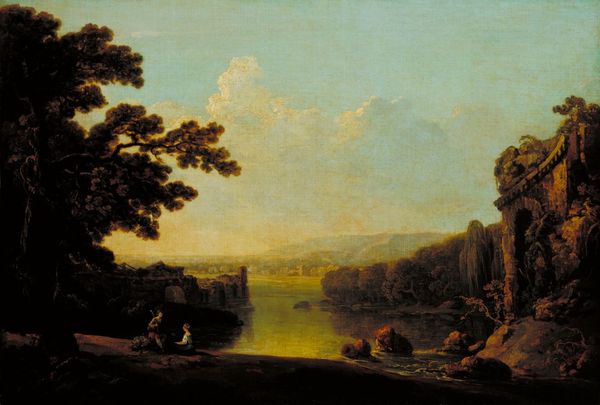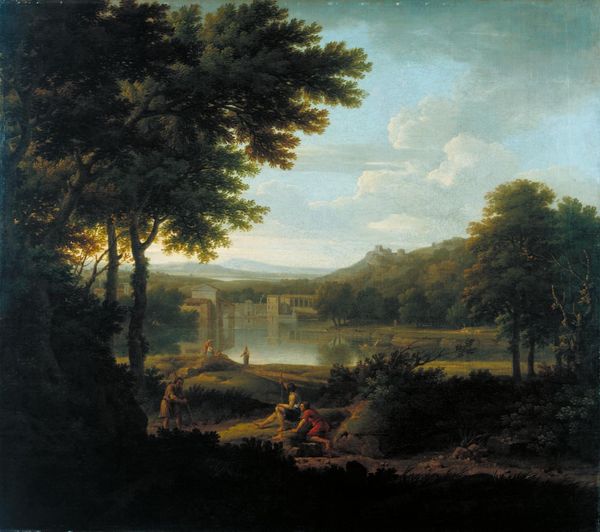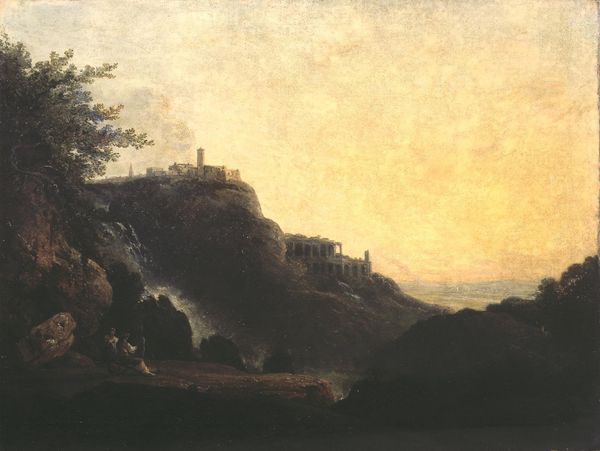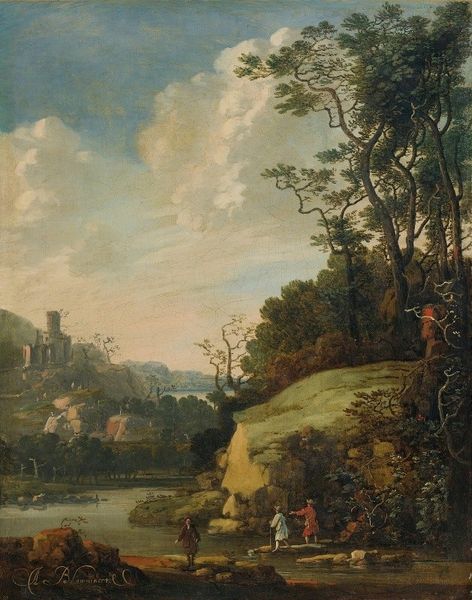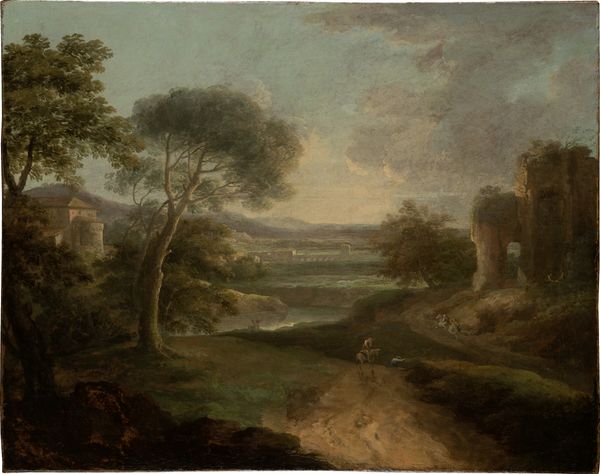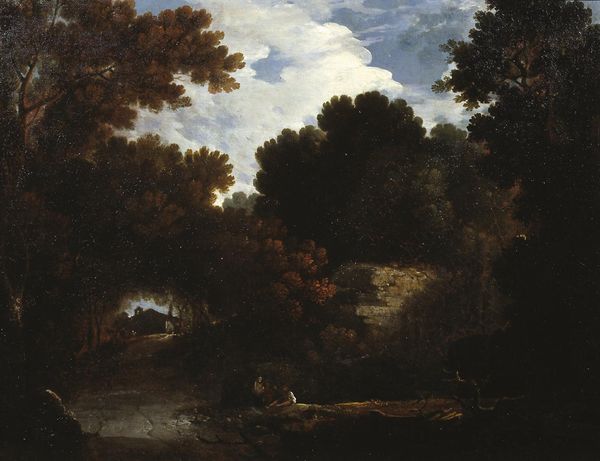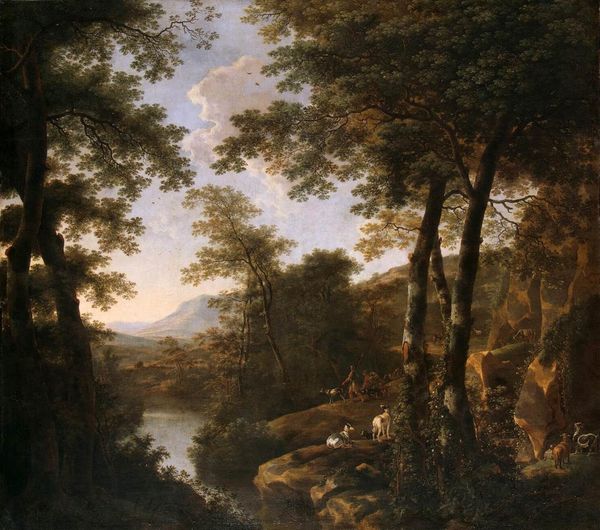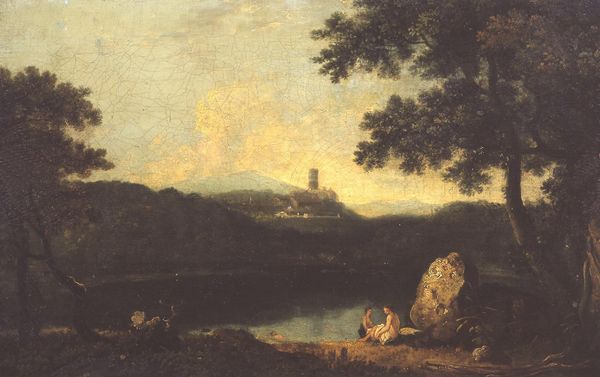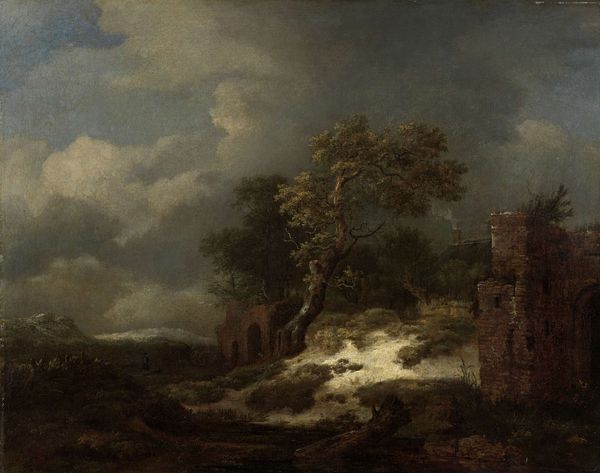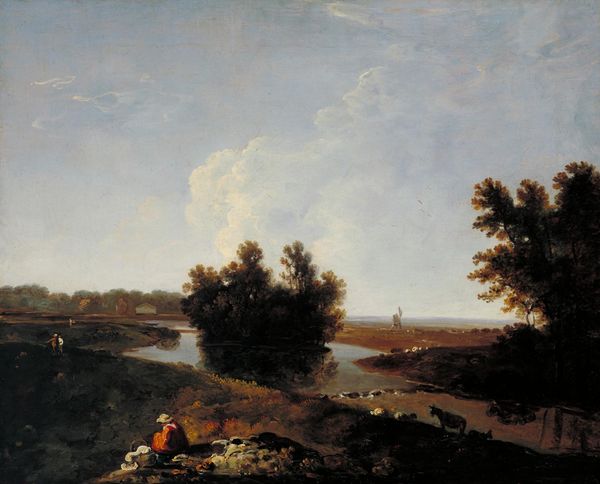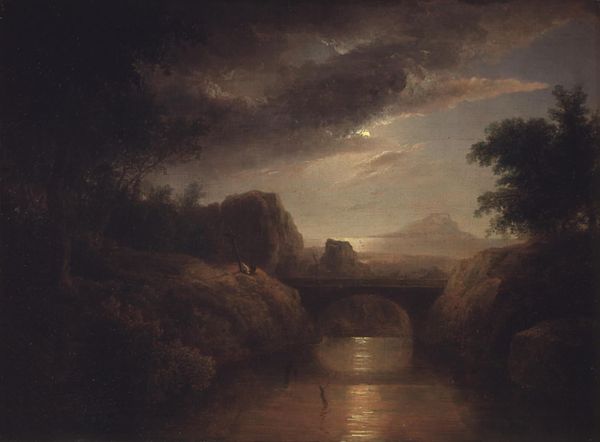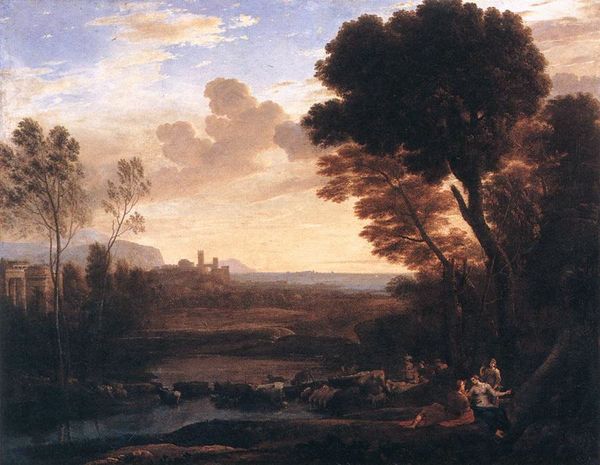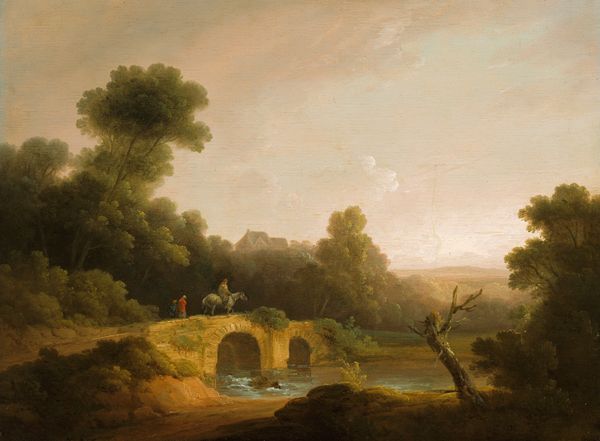
Dimensions: support: 803 x 1006 mm frame: 925 x 112 x 100 mm
Copyright: CC-BY-NC-ND 4.0 DEED, Photo: Tate
Editor: Here we have Jacob More’s “Falls of Clyde: Stonebyres,” at the Tate. The landscape feels both grand and serene. What symbols or visual language do you see at play here? Curator: The sublime waterfall, a prevalent symbol in Romanticism, speaks to nature’s overwhelming power, evoking both awe and terror. Notice the figures dwarfed by the landscape? They become symbols of human vulnerability. Editor: Yes, I see that contrast now. It’s like nature is this constant, enduring force, and we are just fleeting observers. Curator: Precisely. The ruin also holds symbolic weight, a reminder of time's passage and the impermanence of human structures against the backdrop of timeless nature. What remains relevant today? Editor: I now recognize these powerful symbols. It’s been helpful to think about how More used nature to convey deeper ideas about humanity and time.
Comments
tate 8 months ago
⋮
http://www.tate.org.uk/art/artworks/more-falls-of-clyde-stonebyres-t00601
Join the conversation
Join millions of artists and users on Artera today and experience the ultimate creative platform.
tate 8 months ago
⋮
Jacob More was Scottish but spent much of his career in Italy, pursuing the classical ideal in landscape. Here he takes a subject closer to home, on the Clyde, south-east of Glasgow. However, his figures are dressed in vaguely historical costume, suggesting this is somewhere more ‘antique’ than modern Scotland. Such a classical vision of the native landscape complemented the rationalism of the Scottish enlightenment; the pursuit of reason and liberty on ancient Roman or Greek models; combined with more romantic yearning for the legendary Highland past. Gallery label, March 2007
